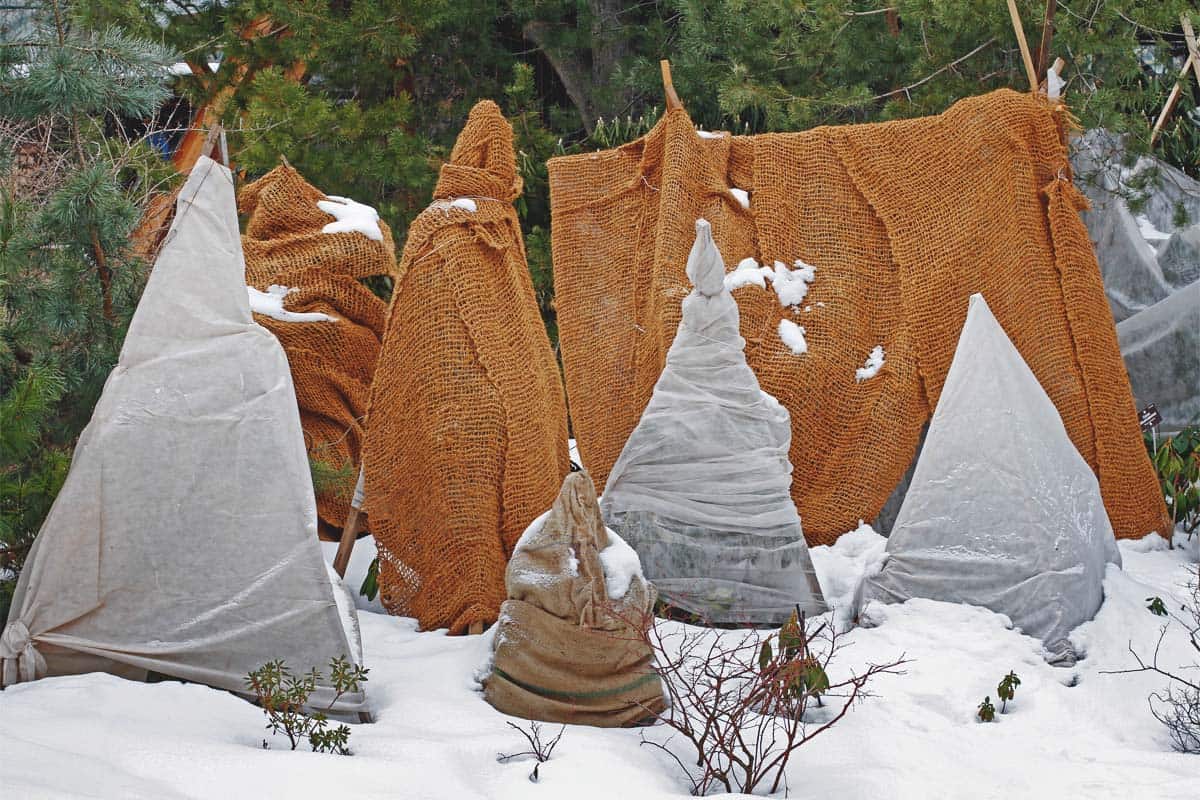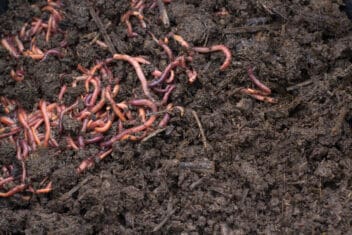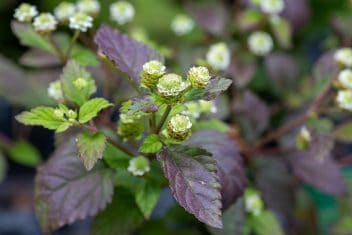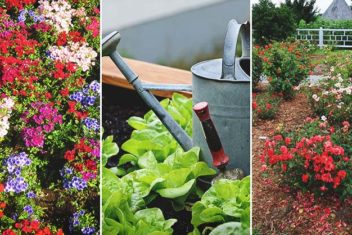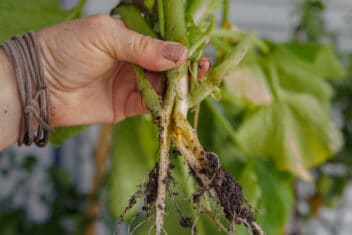It’s easy to forget about your outdoor plants during the winter when everything is cold and nothing is growing – that is until spring arrives and you can see the damage ice has done to your garden.
It may seem inevitable, but ice damage is avoidable. The majority of it occurs when temperatures fluctuate and plants crack when ice thaws and re-freezes.
If you live in an area where the temperature stays consistent – even if it’s freezing cold – ice on plants isn’t as much of a problem unless it builds up too much. If you’re hoping to avoid ice damage on plants this year, here’s what to do.

How Ice Damages Plants
One particularly cold winter, I didn’t notice a lot of ice on the trees and shrubs in my garden, but two trees snapped at the thickest part of the trunk. I didn’t realize what was happening because ice damage can happen on the inside of plants.
When temperatures drop, the liquid inside plant cells can freeze and burst through the cell walls. The result is that the plant collapses or is severely damaged, but you might not know for months or even years.
Freeze damage can happen even when there’s no frost outside. It’s also more likely to occur on north or east-facing plants, and on calm, clear nights. Freeze damage is more common when it’s cold and windy.
Newly planted and young plants are most susceptible to damage. Tropical and semi-tropical plants haven’t evolved to withstand harsh freezes, so they need extra care.
How to Deal with Ice Damage on Plants
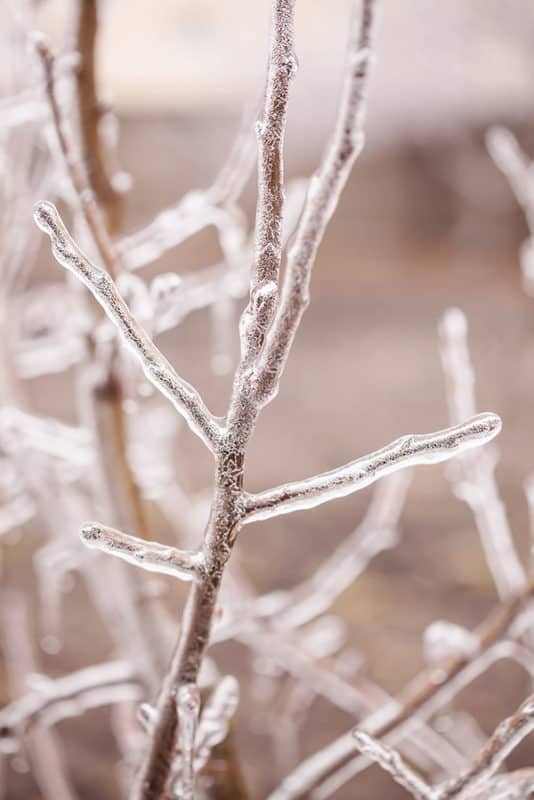
It sounds simple, but the best way to deal with ice damage as it happens is to remove snow and ice as it accumulates. If the ice builds up, the branches on bigger trees and shrubs can snap and foliage on evergreen plants can be damaged.
Brush the snow and ice off as gently as possible with a soft bristle broom. Avoid shaking the plant because you risk snapping branches off.
If the ice has frozen solid to the plant, it’s best to let it melt naturally and hope it doesn’t damage the branches and foliage too much. This is often the case with evergreens as they accumulate a lot of ice.
I have heard of people pouring warm water on the plant to let the ice melt off, but don’t do it. If the water is too hot it can shock and damage the tree.
Let’s say you try to brush the ice and snow off your plants, or the ice does its worst and the plant breaks. What should you do?
If this happens, make the break nice and clean without ragged edges using sharp pruners. This will assist in the spring healing of the wound.
Prop Up Branches
When I have branches covered in ice and they are bending under the weight, I prop them up with boards to help take some of the strain away from the branch.
Some people say this is a no-no, but I’ve had no issues from doing this. You need to remember, you’re not trying to lift the branch up to its original height, you’re only lifting it slightly to support it temporarily.
Preventing Ice Damge
Root hardy perennials may die back above ground from ice damage, but the roots remain viable until they regrow in spring, so you don’t need to worry about them. The plants you need to worry about are the hardy perennial trees and shrubs.
Prune
Before winter and the risk of snow and ice storms, I make sure my trees and plants are pruned in a shape that is less likely to suffer damage.
I’ve learned through experience that certain types of trees are in danger of ice damage. Certain tree and shrub shapes are more prone to damage as well.
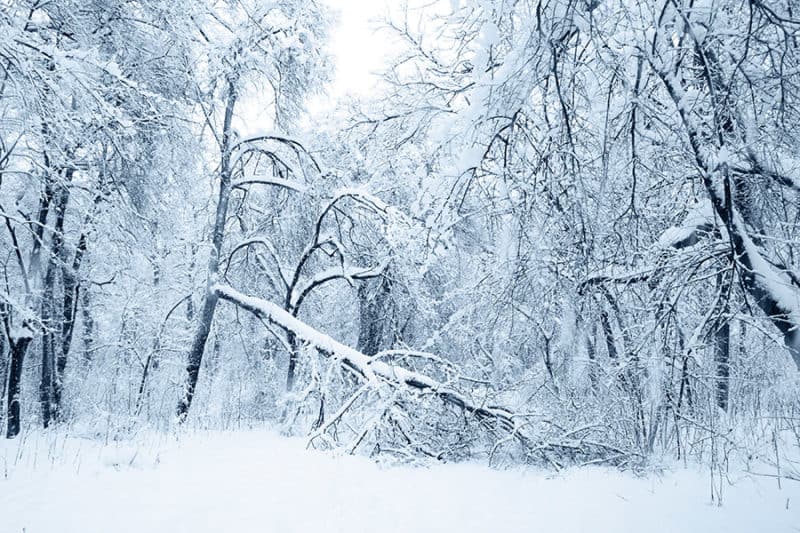
Softwood trees that have two central leaders with a shape like a “V” are the most prone to split down the middle after ice build-up. Softwood trees include:
- Poplar
- Silver Willow
- Maple
- Birch
- Elm
Prune these trees in a way so that they can withstand winter.
Shrubs that are dense can also be damaged by heavy ice. Thin them out with a good pre-winter prune. Don’t prune too much as the plants need strength, but at the same time, you don’t want to give the ice too many places to sit.
Don’t prune delicate plants after the end of August. Pruning early in the fall season can cause new growth, which won’t be able to withstand freezing.
Don’t start pruning in the spring on delicate plants until the freeze has passed.
Choose the Right Plants
The first step to preventing ice damage to plants is to choose the right ones in the first place. Plants must be appropriate for your zone. Having tropicals in summer may make your garden look lovely, but you’ve set yourself up for failure as soon as winter appears.
Provide Protection
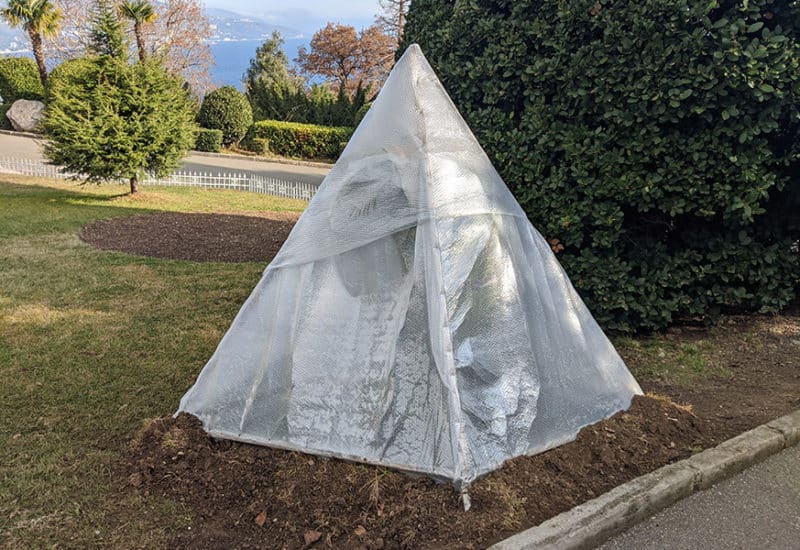
If you have plants that are susceptible to damage but are appropriate to your zone, you’ll need to give them some protection during the winter.
I have some massive plants in pots that I can’t move, so I wrap them in cloth or bury the pot into the ground in the fall. Then, I mulch the pot heavily and keep vigilant for ice and snow storms to ensure there’s no damage or too much build-up.
During the winter, cover small, more delicate plants with burlap.
Don’t allow the burlap sack to lay on the plant. The best way to stop this happening is to hammer stakes into the ground. Lay the burlap sack over the plant, pull it tight and tie it to the stakes. You can also hold the sack in place with rocks.
This is a fiddly method, but if like me you have some expensive plants you don’t want to be damaged by ice, it’s worth the time to protect them.
Fertilizing
Avoid excessive nitrogen in late summer to protect your plants during the winter. When plants receive excessive nitrogen, they produce growth that is highly susceptible to damage because the growth is soft.
Use a well-balanced fertilizer that’s not excessive in nitrogen, and stop feeding six weeks before the first expected frost to allow the plants to harden off.
Stake Trees
If ice build-up on plants is not severe, sometimes staking a plant is enough to keep it safe until you clear it of ice. Just remember to remove it as soon as you can.
Mulch
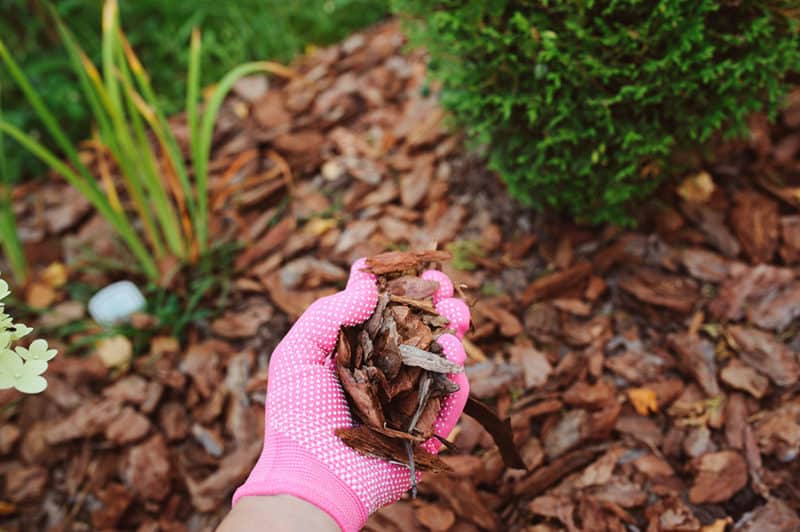
Give your plants a blanket of protection with mulch, which keeps the soil a little bit warmer, protecting the roots of the plant outside in winter. I prefer bark mulch since it doesn’t get sodden and hold too much water.
I don’t mulch to keep the parts of the plant above ground alive, but to keep the roots alive for regrowth should the parts of the plant exposed to the air die from ice damage.
The Bottom Line
Ice on plants isn’t a death sentence. You need to plant according to your zone and that’s half the battle. Then, with a little care, you can minimize any damage and keep your garden healthy and happy.
